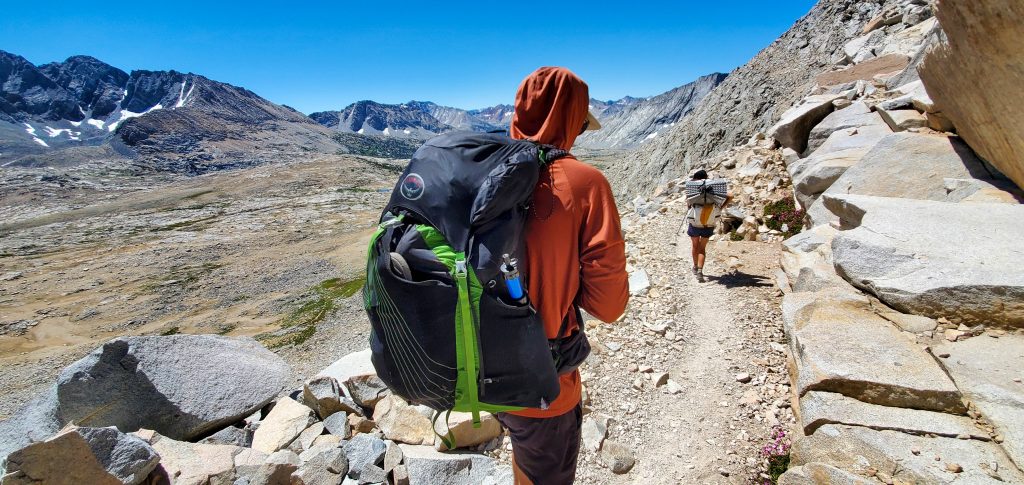I drop the tailgate on the old Toyota truck and let the monsters go ripping into the desert. I hit the start button on my watch and swing my body forward into motion. That first step feels good. Then the 2nd and soon the steps are no longer part of my thoughts, they are just happening. I drop down through the wash picking up speed on the downslope and then almost stopping on the other side as my momentum peters out. The trail mellows and gets rocky. My brain focuses on the rocks and the forward motion.
It’s early and hence dark. The sun hasn’t even begun to put light on the eastern horizon. All I can see is whatever happens to be captured within the bubble of light emanating out of my headlamp. The ground feels like it is moving fast. The rocks are speeding toward me. I take mental note of their location only to move on to the next three steps before my feet hit the rocks. By the time I make the first switchback, my brain is focused. The thousands of thoughts racing around inside have slowed. The pace of my run is the pace of my thoughts.
The rhythmic rise and fall of my steps fuels a state of meditation. At first, my thoughts clear as my brain focuses in on the terrain and the act of running. What feels like a decrease in oxygen to my brain, slows the thoughts and intensifies my focus. Once my blood is pumping and running feels natural, the terrain fades from the forefront of my brain and leaves the stage open for whatever needs to be processed. I argue with myself. Write pages of text that I often just forget. Figure out the big picture. Solve the problems. All while moving at about 6 miles per hour.
I speed up. My brain feels like it slows down.
Everything is too fast.
Sitting at my desk, the world feels like it is moving too fast.
Spotify is running, playing a non-stop stream of music quietly in the background, or at least as quietly as one can play gutter punk. Roaring on top of that is Excel. I have five different workbooks open. Each one houses a different set of numbers and metrics quantifying our work. Onenote sits perched on the small screen detached from my desktop. The scribbles and notes that I need go in there. The point of sale is running reports that spit out the numbers. On top of that, email, Teams and text for the communication that is constantly burbling like a small stream throughout my day.
The windows, tabs and chats feel endless. The incessant distractions reverberate like ripples across the pond of my time. One leads me to a new window that leads to a new chat that leads to a new task that leads to a blank stare. I then retrace the mental steps that got me here. The lily pads stretch across the three different screens as I hop backward trying to remember what I was doing in the first place.
Everything is moving too quickly. Or at least, that is how it feels. Beeps, flickers and small numbers on top of red dots telling me there is something that has to be done. Sort this. Answer that. Information often seems like it is flowing like a flooding river, violently tossing itself everywhere to try and fit the exacerbated amount of information through a channel meant for much less. The flood collides with everything and the excess breaks free of the riverbanks and spills out onto the flood plain where it is lost and forgotten.
And yet, nothing is actually moving.

Sitting in my car barreling down the highway at 80 miles per hour, a lady in an Audi goes blowing past me like I’m not even moving, phone in her hand. She is navigating at speed humans never went for hundreds of thousands of years while also feeling like she can effectively negotiate whatever it is that her phone is telling her.
At the slow 80 miles per hour that I am moving, my brain must analyze and navigate 1.33 miles every minute. That is 10 times faster than my average 10 minute miles when I’m running. That’s over a mile of turns, bumps, other vehicles, weather patterns, road obstacles, animals and debris in 60 seconds.
The fastest known speed of a human was recorded by Usain Bolt who set the world record for the 100 meters finishing in 9.58 seconds. This is to say that one of us, of all the billions of humans that exist, has evolved to move at just over 23 mph for about 10 seconds. That equals out to moving at 34 feet per second. Compare that to the 117 feet per second we are moving when driving at 80 mph.
That lady in the Audi must have super human brain capacity.
In her book Fuzz, When Nature Breaks the Law, Mary Roach breaks down why animals are so often killed by cars. Chapter 10, On the Road Again, she goes through multiple studies from bird to mammals that all point to the same conclusion. The reason deer, rabbits, birds and other roadside animals behave in what can be described as illogical or irrational manner to oncoming traffic is because they haven’t evolved to understand the speed at which the car is moving. Specifically, once that speed has increased past that of their most common predator.
Deer, for example, are quite apt at understanding the danger and removing themselves from it at 25 mph. Few will freeze and get hit. Increase the speed up to 55 and most will still jump out of the way before the vehicle comes barreling through them. However, past that 55 and the odds of the deer just freezing and not moving increases drastically.

Zoned in
It would feel a lot more like a Monday except that it’s Wednesday. It’s one of those mornings that you feel like your backside is glued to the sheets or that there is some invisible force keeping you in bed.
I’m usually awake before my alarm goes off at 5, but this morning, I barely remember turning it off. I am fighting back the sleep trying to stay lucid enough to get out of bed, but my brain keeps sinking back into dreams. Mama Bear walks through the bedroom and my senses fish for what it means, this pulls me a bit closer to being up. She closes the door and I almost fall back to sleep. A few more ups and downs and I finally pull myself to a seated position only to let myself fall back into the comfort of the mattress. Another ten or so minutes go by and I drag myself up again. This time it sticks and I waddle out to the kitchen to find coffee.
Coffee helps.
My brain seems to be fishing for consciousness. Or maybe it’s just that I feel like I’m living in a fish bowl, either way, it’s a slow morning. I plop myself into my writing chair and start sipping that dark black nectar. The grogginess slowly subsides. It might have been out of pure habit or that the caffeine finally got through, but at 6 am I’m readying myself to go out. I’m still tired, but the puppies need to get their wiggles out and let’s be honest, I do too.
I get to the trailhead and let the monsters out of the back. My brain doesn’t feel like it can do anything and my body is somewhere between thinking it’s still in bed and being over amped from the coffee.
I hit start on my watch and take the first step. By the tenth one, I’m leaping over the step over and the chunky sandstone trail rolls out in front of me. At first, everything feels too fast, but within seconds, my brain has snapped to attention and my body is now in control. The slow feeling of the morning dissolves in the motion. My brain that struggled to process my wife walking through the bedroom is now calculating speed, distance and depth ensuring that my foot falls in the right spot, make the right adjustments to not go tumbling down the trail and to maintain a forward momentum.
Within an 1/8th of a mile of the trailhead, my brain and body are in sync. The slow feeling of the morning is gone, my body is stoked to be running and my brain has ticked into clarity processing only the basics of forward motion and then once that task is handled, melting into processing all the other stuff that is bouncing around in there. It’s like the two met once they were both moving at the same speed.
I was zoned in.

Speed up to Slow Down?
I think most of us would agree that taking a few minutes to check out from the barrage of endless information flowing at us at 10 gb/sec is almost mandatory. Checking out from the endless beeps and notifications that keep us hopping from one end of the spectrum to the other constantly distracted trying to keep the boat upright in the torrent. There is an entire industry now built around helping people slow down, check out, apps for meditation and retreats to give you that break you so desperately need.
The flipside to how fast our world is, is the fact that physically we hardly move. While our brains are forced to adapt to speeds that we have not evolved to comprehend, our bodies sit motionless for almost the entire day. Eight hours at a desk, a few hours in a car, and then we sit watching incessant information flow through us on our couches. Our brains are being overworked. Our bodies have all fallen into atrophy. We are exhausted from both.
For years I’ve thought about how our lives are too fast and spent most of my time slowing it down. It wasn’t until the above-described run that it dawned on me that our lives are also too slow. We have created a disconnect between our mental speeds and our physical speeds. While our bodies lie dormant, our brains are racing trying to comprehend the world at 4 times the speed we evolved to understand it.
It’s taking the two and reconnecting them that makes moving under one’s own effort so glorious. The body finally begins to move, pumping out blood and oxygen, the brain is yanked from the incessant string of digital debris and forced to zone in. We are finally able to focus.
And that focus seems to fix everything.
Embrace Chaos. Seek Discomfort.


